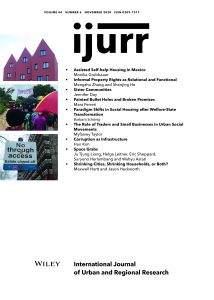Corruption is regularly treated as a barrier to infrastructure, development and growth. However, in Saigon, corruption itself has become an infrastructure in Vietnam’s late‐socialist urban transformation. This infrastructure facilitates not only growth in the form of transnational investment, property speculation and construction, but allows for different kinds of planning and development practice as well. Perceptions about corruption in Vietnam, and in Saigon specifically, shape market and planning practices that structure the terms on which interested parties from abroad and internally speculate upon and ultimately develop urban projects. This is not a static formulation of corruption. Rather, corruption and the various political and policy responses to it constantly shape how brokers, developers and financiers renegotiate how the city becomes a knowable object for investment, legible to the calculations of both risk and reward used by global investors as well as to those who enact the embedded bureaucratic, legal and political practices that create Saigon’s built environment. In this article I argue that different definitions and policy responses to corruption in effect create variable ways of seeing the city (as well as modes of being seen) that have an impact on the material realities of the metropolis—the types of connections produced with transnational finance, the legal and regulatory structure under which urbanization unfolds, and the types of players, firms and officials involved.

